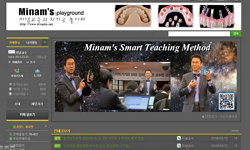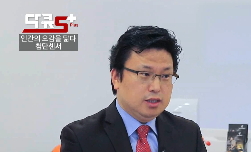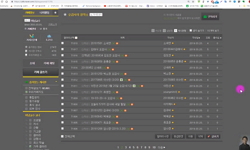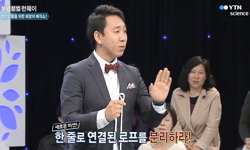(Background and Purpose) Recently, the South Korean cafe market has become over-saturated. Cafes are places where people not only drink coffee and relax but also spend time for meetings, working on personal duties, and leisure activities. Recently, th...
http://chineseinput.net/에서 pinyin(병음)방식으로 중국어를 변환할 수 있습니다.
변환된 중국어를 복사하여 사용하시면 됩니다.
- 中文 을 입력하시려면 zhongwen을 입력하시고 space를누르시면됩니다.
- 北京 을 입력하시려면 beijing을 입력하시고 space를 누르시면 됩니다.

카페 공간의 오감과 감성디자인 표현에 관한 연구 = A Study on the Expression of Five-Sense and Affective Design in Cafe Space
한글로보기https://www.riss.kr/link?id=A106171897
- 저자
- 발행기관
- 학술지명
- 권호사항
-
발행연도
2019
-
작성언어
Korean
-
주제어
카페 ; 오감 ; 공감각 ; 감성디자인 ; 공간디자인 ; Cafe ; Five-senses ; Synesthesia ; Affective design ; Spatial design
-
등재정보
KCI등재
-
자료형태
학술저널
- 발행기관 URL
-
수록면
21-32(12쪽)
-
KCI 피인용횟수
12
- DOI식별코드
- 제공처
-
0
상세조회 -
0
다운로드
부가정보
다국어 초록 (Multilingual Abstract)
(Background and Purpose) Recently, the South Korean cafe market has become over-saturated. Cafes are places where people not only drink coffee and relax but also spend time for meetings, working on personal duties, and leisure activities. Recently, there has been a tendency to visit exotic cafes and consume new experiences within the individual’s daily lifestyle. However, most cafes do not reflect the needs of consumers and their lifestyles, and they offer only fragmentary services, under-performing and failing to satisfy customers with their uniqueness or differentiation. Therefore, the purpose of this research is to conduct a study on cafe spaces, to provide a new concept of service that all cafe should have, with a differentiated affective design applied to a positive function and the five senses. (Method) This research derives the spatial meaning of cafe spaces and the necessary elements of affective space expression directing characteristics through prior research and theoretical reflection, and utilizes them as elements of design expression. Through these parameters and factors, we propose the evaluation model for assessing the affective design of cafes, and derive the correlation and justification of elements including five senses and affective space designs. Based on the factors analyzed, this research aims to extract the necessary expression elements in the cafe space and propose the case analysis model through the five senses that can be applied to the space. (Result) According to the case analysis, it was revealed that each cafe's space was designed to fit the consumers' demand for something new, instead of a ordinary store presentation. It was also indicated that the cafe sought differentiation through service and sharing emotional experiences that it could not experience in other cafes even if the direction of expression differed. Depending on the meaning of the space and the purpose of the consumers' visit, different elements of expression were first provided through space research to reveal their unique characteristics. (Conclusion) We could see that among the characteristics of the space based on five senses and six elements of expression of affective design, there were expressions that should be prioritized according to the purpose of the visitor or the location of the place. However, design expression focused on only one direction could be directed into a consistent and unique cafe space, but it was also reflecting that the many spaces did not reflect the various demands of the consumers. Therefore, the meaning of this research is our hope to be able to offer this research as fundamental data and understanding of affective design in the future and wish to enlighten affective design cafe space research that requires five-sense of this era.
국문 초록 (Abstract)
(연구배경 및 목적) 최근 우리나라 카페시장은 과포화 상태에 이르고 있다. 카페는 사람들이 단순히 커피를 마시고 휴식을 취하는 것은 물론이고, 만남, 개인 작업, 여가활동을 하며 시간을 ...
(연구배경 및 목적) 최근 우리나라 카페시장은 과포화 상태에 이르고 있다. 카페는 사람들이 단순히 커피를 마시고 휴식을 취하는 것은 물론이고, 만남, 개인 작업, 여가활동을 하며 시간을 보내는 곳이기도 하다. 최근에는 독창적인 이색카페를 찾아다니며 새로운 경험과 각 개인의 라이프 스타일속으로 일상화하는 소비를 하고 싶어 하는 경향이 두드러지고 있다. 그러나 카페는 이용객들의 니즈와 그들의 라이프 스타일을 반영하지 못할뿐더러, 독특함과 차별화로 고객에게 만족감을 주지 못하면서, 단편적인 서비스만을 제공하는 곳이 대부분이다. 그러므로 본 연구는 카페가 가지고 있어야 할 순기능과 오감요소를 적용한 차별화된 감성디자인 표현이 적용된 새로운 개념의 서비스를 제공하는 카페 공간에 관하여 연구를 진행하는 것이 목적이다. (연구방법) 본 연구는 선행연구 및 이론고찰을 통해 카페 공간의 공간적 의미와 감성 공간 표현 연출특성 필요 요소를 도출하여 감성디자인 표현 요소로 활용한다. 이러한 인자요소를 통해 카페의 감성디자인 평가를 위한 상관관계의 평가모형을 제안하며 오감과 공간 감성디자인 요소들의 상관적 관계와 당위성을 도출한다. 그리고 분석한 요소들을 바탕으로 카페 공간에 필요한 표현요소를 추출하고, 공간에 적용할 수 있는 오감요소를 통해 사례 분석 모형을 제안한다. (결과) 사례 분석 결과 각 카페 공간들은 일률적인 매장 연출에서 벗어나 새로운 것을 요구하는 소비자들의 원츠에 맞게 연출하려고 하였다. 또한 카페가 추구하는 공간의 감성이 다르지만 다른 카페에서 경험할 수 없는 감성적 경험의 공유와 서비스를 통해 차별화를 추구하려고 했다는 것을 알 수 있었다. 특히 각 카페 공간들은 공간의 의미나 방문객의 방문 목적에 따라 각기 다른 표현요소들을 우선으로 공간연구를 통해서 제공하여 독특함을 가지고 있음을 알 수 있었다. (결론) 카페 공간에서 오감을 바탕으로 한 공간의 특성, 감성디자인의 표현 요소 6가지 중, 방문자의 목적이나, 그 장소의 위치에 따라 우선시해야 하는 표현요소들이 있음을 알 수 있었다. 하지만 하나의 방향으로만 집중된 디자인 표현은 일관성과 독특성 있는 카페 공간으로 연출이 될 수 있으나, 그 공간들은 니즈들의 다양한 원츠를 반영하지 못함을 알 수 있었다. 그러므로 본 연구를 통해서 앞으로 차별화된 감성 공간 요구의 특성 이해 및 기초자료로 활용되길 바라며, 현시대에 필요한 오감이 적용된 감성디자인 카페 공간 연구가 활성화되길 바라는 것이 의의라 할 수 있다.
참고문헌 (Reference)
1 이정민, "현대 감성디자인의 표현유형 분석 : 사회적 패러다임과의 연관성 분석을 중심으로" 한국콘텐츠학회 13 (13): 168-183, 2013
2 김정연, "오감브랜딩의 Visual Identity 확장에 관한 연구" 한국전시산업융합연구원 10 : 51-63, 2012
3 천미순, "오감(五感)과 브랜드디자인의 인터랙티비티에 관한 연구" 사단법인 한국브랜드디자인학회 8 (8): 189-200, 2010
4 박정은, "라이프스타일 호텔에서 나타난 공간마케팅 특성에 관한 연구" 한국공간디자인학회 13 (13): 93-104, 2018
5 송석원, "게슈탈트 시지각심리를 적용한 백화점 제화 브랜드샵 공간디자인에 관한 연구" 한국공간디자인학회 5 (5): 9-18, 2010
6 이상일, "감성디자인이 실내공간에 미치는 영향에 관한 디자인 연구 - 조명디자인을 중심으로 -" 한국가구학회 23 (23): 317-323, 2012
7 이샘, "감각기반의 실내공간디자인요소 평가 요소 구축 - 루돌프 슈타이너 감각이론 중심으로 -" 한국전시산업융합연구원 26 : 257-268, 2016
8 문근이, "‘제3의 공간’으로서 카페의 공간연출 전략에 관한 연구 - ‘길(street) 문화’가 형성된 지역을 중심으로 -" 한국실내디자인학회 22 (22): 68-77, 2013
9 Kim, SukHoon, "The key to make everything look better space design" Gilbut press 2015
10 Victionary, "Saegae gotgot aju tukbyulhan cafe and coffee house" Chack ealknen sooyoil 2017
1 이정민, "현대 감성디자인의 표현유형 분석 : 사회적 패러다임과의 연관성 분석을 중심으로" 한국콘텐츠학회 13 (13): 168-183, 2013
2 김정연, "오감브랜딩의 Visual Identity 확장에 관한 연구" 한국전시산업융합연구원 10 : 51-63, 2012
3 천미순, "오감(五感)과 브랜드디자인의 인터랙티비티에 관한 연구" 사단법인 한국브랜드디자인학회 8 (8): 189-200, 2010
4 박정은, "라이프스타일 호텔에서 나타난 공간마케팅 특성에 관한 연구" 한국공간디자인학회 13 (13): 93-104, 2018
5 송석원, "게슈탈트 시지각심리를 적용한 백화점 제화 브랜드샵 공간디자인에 관한 연구" 한국공간디자인학회 5 (5): 9-18, 2010
6 이상일, "감성디자인이 실내공간에 미치는 영향에 관한 디자인 연구 - 조명디자인을 중심으로 -" 한국가구학회 23 (23): 317-323, 2012
7 이샘, "감각기반의 실내공간디자인요소 평가 요소 구축 - 루돌프 슈타이너 감각이론 중심으로 -" 한국전시산업융합연구원 26 : 257-268, 2016
8 문근이, "‘제3의 공간’으로서 카페의 공간연출 전략에 관한 연구 - ‘길(street) 문화’가 형성된 지역을 중심으로 -" 한국실내디자인학회 22 (22): 68-77, 2013
9 Kim, SukHoon, "The key to make everything look better space design" Gilbut press 2015
10 Victionary, "Saegae gotgot aju tukbyulhan cafe and coffee house" Chack ealknen sooyoil 2017
11 Lee, SangHyun, "Momgyua maumel Salinen hangbok gongan, Lounging" Frontier Press 2015
12 Colin, Ellard, "Gongan e saramel womjikinda" thequestbook 2016
13 Esther M. Sternberg, "Gongan e maumel salinda" thequestbook 2013
14 Kim, So Hyun, "Branch Spacing Plan Combining Five Senses -Focusing on Fresh Garden of MAIIM Cosmetics-" 24 : 18-30, 2017
15 Korean Institute of Interior Design Journal, "Beyond Reason Emotional Space Design" Korean Institute of Interior Design Journal 2009
16 Yoon, Ji Hee, "A Study on Program Composition and Space Design Characteristics in Contemporary Cafe as Cultural Space" 14 (14): 108-113, 2013
17 Kim, Hye Kyung, "A Study on Interior Design Plan of the 7Relax lounge Space applying Emotional Design Expression Characteristic Elements" 12 : 65-70, 2017
동일학술지(권/호) 다른 논문
-
미국 홀로코스트 박물관의 공간구성과 디자인 방법에 관한 사례연구
- 한국공간디자인학회
- 김희근
- 2019
- KCI등재
-
도시활력증진지역 개발사업에 있어 물리적 환경요인에 의한 보행환경에 관한 연구 -대구광역시 해피타운 프로젝트 완료 구역을 대상으로-
- 한국공간디자인학회
- 이은영
- 2019
- KCI등재
-
전략적 체험 모듈과 비주얼 머천다이징 상관관계 중요도 사례 연구
- 한국공간디자인학회
- 김운걸
- 2019
- KCI등재
-
텍스트마이닝을 통한 국내 전시회의 관람 동기 분석 연구
- 한국공간디자인학회
- 김새록
- 2019
- KCI등재
분석정보
인용정보 인용지수 설명보기
학술지 이력
| 연월일 | 이력구분 | 이력상세 | 등재구분 |
|---|---|---|---|
| 2022 | 평가예정 | 재인증평가 신청대상 (재인증) | |
| 2019-01-01 | 평가 | 등재학술지 유지 (계속평가) |  |
| 2016-01-01 | 평가 | 등재학술지 선정 (계속평가) |  |
| 2015-06-01 | 학술지명변경 | 외국어명 : Journal of the Korea Intitute of the spatial design -> Journal of Korea Intitute of Spatial Design |  |
| 2015-01-01 | 평가 | 등재후보학술지 유지 (계속평가) |  |
| 2013-01-01 | 평가 | 등재후보 1차 FAIL (등재후보1차) |  |
| 2012-01-01 | 평가 | 등재후보학술지 유지 (기타) |  |
| 2011-01-01 | 평가 | 등재후보 1차 PASS (등재후보1차) |  |
| 2009-01-01 | 평가 | 등재후보학술지 선정 (신규평가) |  |
학술지 인용정보
| 기준연도 | WOS-KCI 통합IF(2년) | KCIF(2년) | KCIF(3년) |
|---|---|---|---|
| 2016 | 0.47 | 0.47 | 0.53 |
| KCIF(4년) | KCIF(5년) | 중심성지수(3년) | 즉시성지수 |
| 0.51 | 0.52 | 0.692 | 0.28 |





 KCI
KCI KISS
KISS






